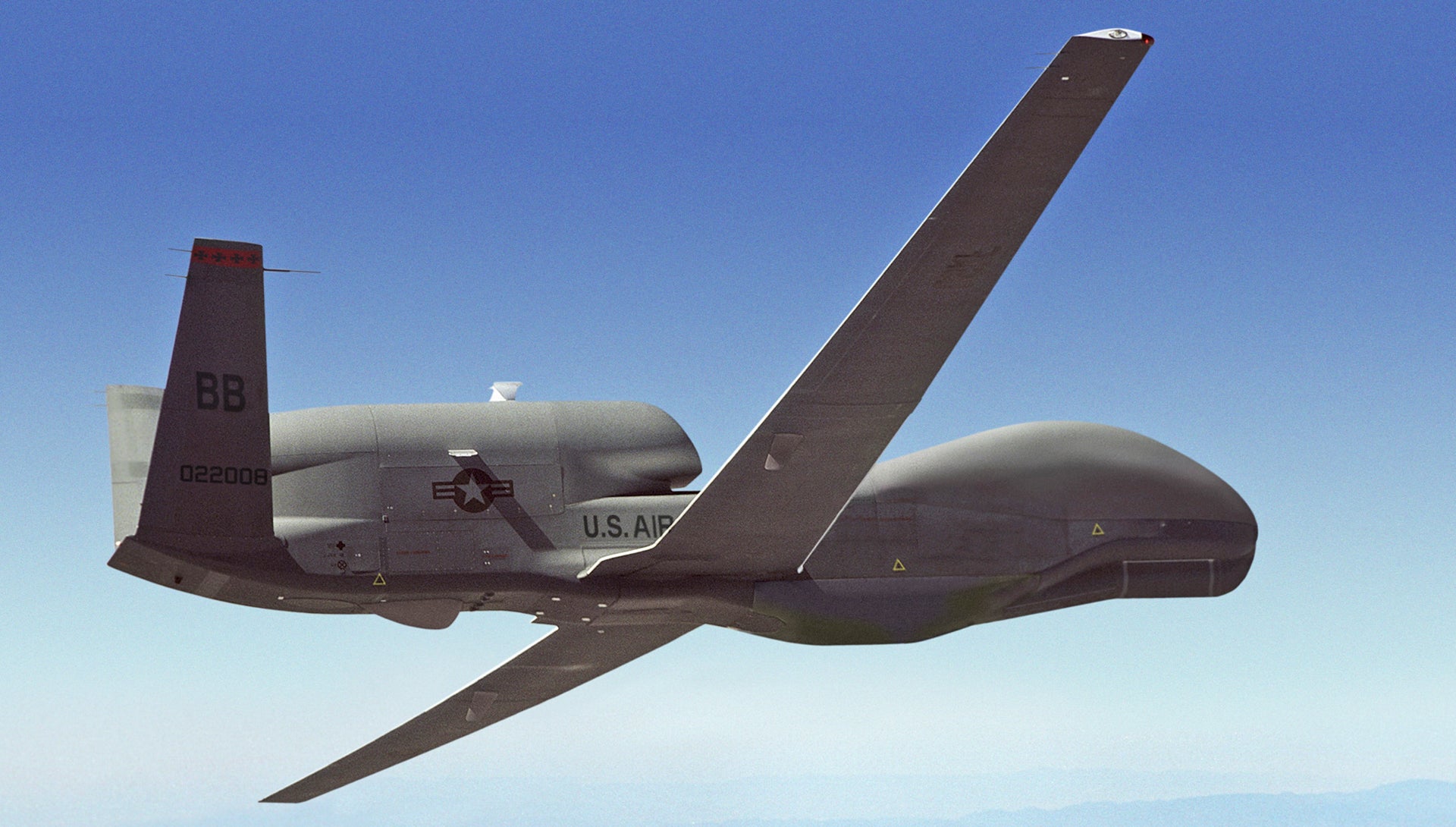Though there are few details at present, a U.S. Air Force RQ-4 Global Hawk drone has crashed into the Inyo National Forest in California. The accident appears to have touched off a forest fire in the process and local and federal authorities are reportedly already on the scene.
Officials at Edwards Air Force Base in California confirmed to local news outlets that the large high altitude, long endurance unmanned aircraft crashed during a routine transit from Beale Air Force Base more than 350 miles to the northwest. Inyo National Forest is roughly 200 miles north of Edwards, not in a straight line from Beale. Though there are no information on the circumstances of the mishap so far, this might mean aircraft was following an elongated flight path over less populated areas or had lost contact with its ground control station and flew off course. As yet, there are no reports of any injuries or fatalities on the ground.
Beale Air Force base is home to the 9th Reconnaissance Wing, which operates both RQ-4s and manned U-2 spy planes. It also hosts the U.S. Air Force Reserve’s 13th Reconnaissance Squadron, a unit that flies Global Hawks that is technically part of the U.S. Air Force Reserve’s 926th Wing at Nellis Air Force Base in Nevada. There is no indication yet what unit was controlling the drone at the time of the crash.
With a wingspan of more than 130 feet, roughly the same as a 737 airliner, the RQ-4 is the the Air Force’s largest drone. The Air Force has more than 30 RQ-4 surveillance drones, as well as three EQ-4s fitted with Northrop Grumman’s Battlefield Airborne Communications Node (BACN), which acts as a communications hub and relay allowing various other types of aircraft to talk to each other and share information. However, all of the EQ-4 aircraft are assigned to the 380th Air Expeditionary Wing based at Al Dhafra Air Base in the United Arab Emirates and would not have been involved in this incident.

Late last fall, a TU-2S Dragon Lady that also belonged to Beale, AFB crashed in central California, killing one of its pilots. The cause of the crash was found to be pilot error. The Global Hawk leverages a semi-autonomous control concept, whereby there is no pilot—remote or otherwise—”flying” the aircraft. Instead, controllers direct the aircraft and its sensors via a desktop-like point and click interface. You can read all about the RQ-4 here and here is an interview Tyler Rogoway conducted with a Global Hawk pilot at Edwards AFB a few years ago:

We will update this story as more information becomes available.
Contact the author: Tyler@thedrive.com
